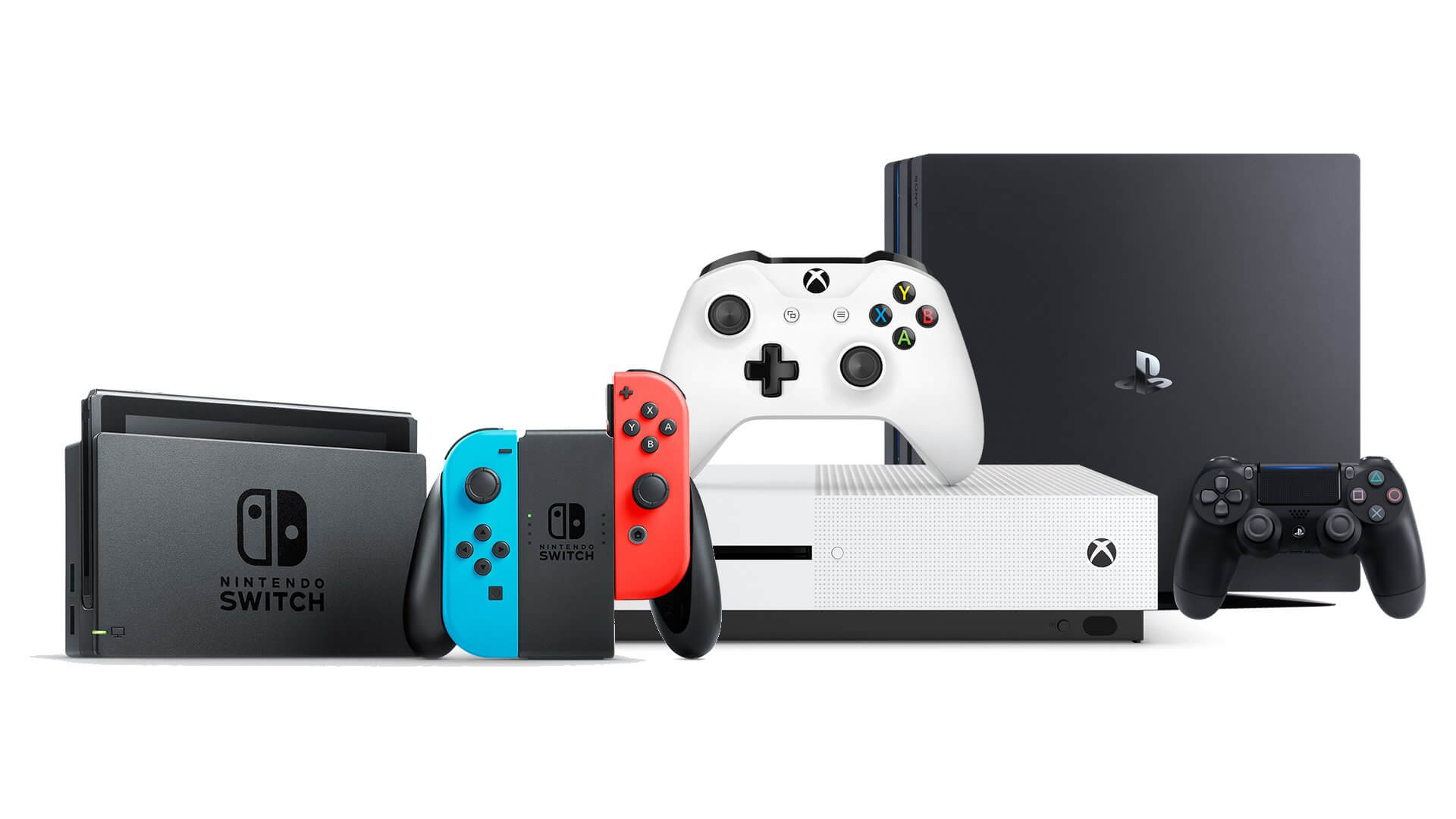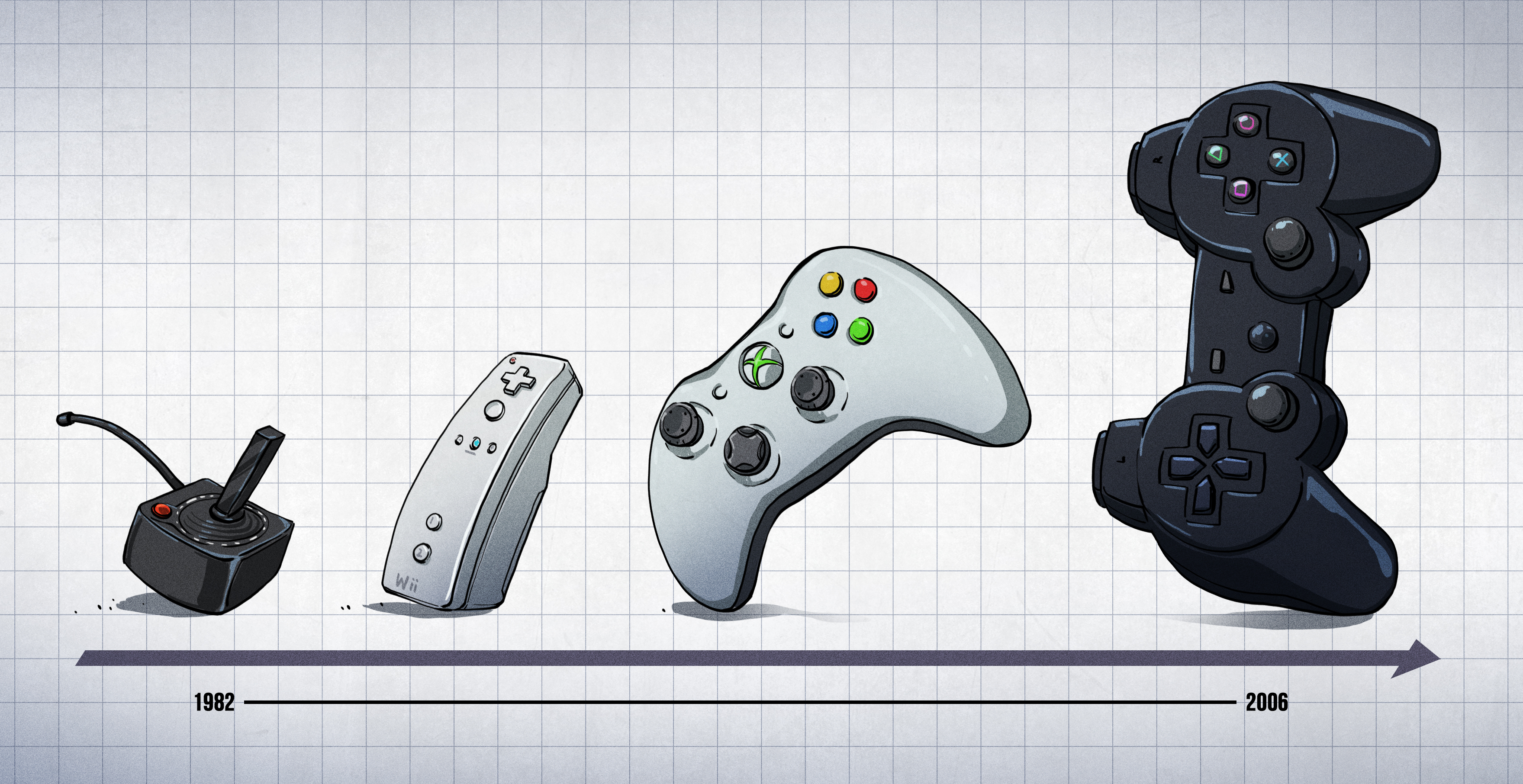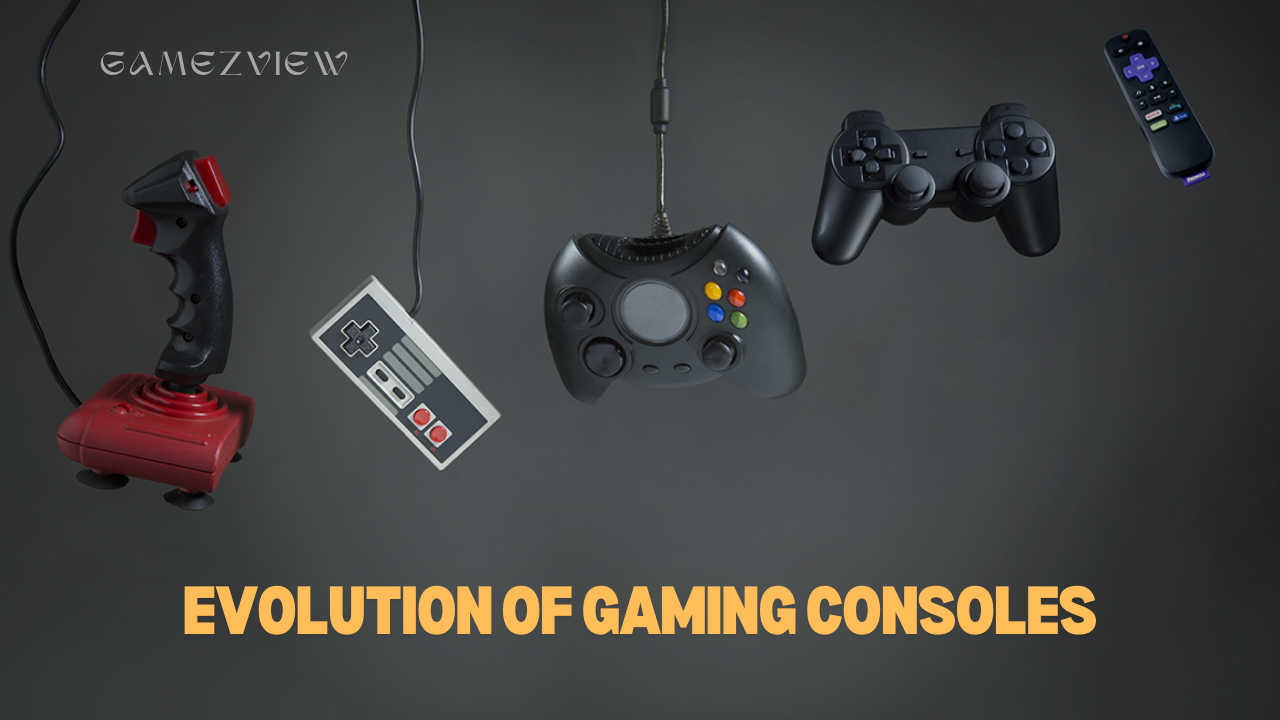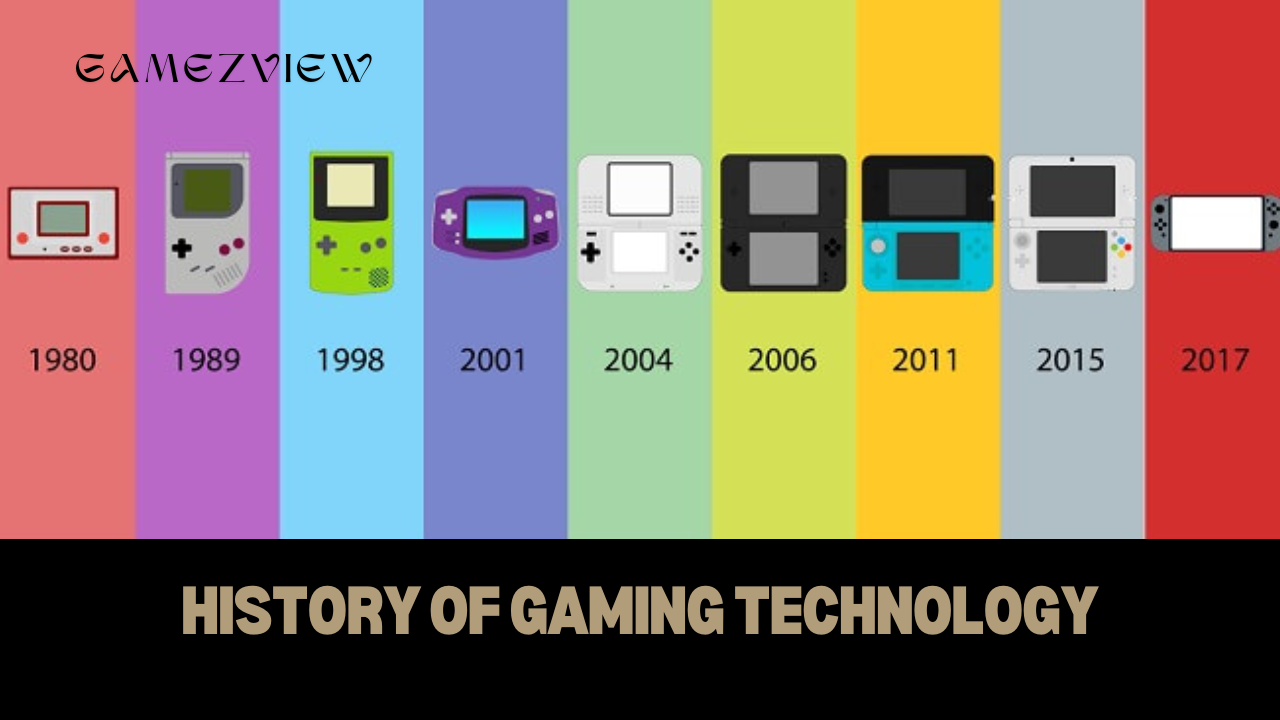The evolution of gaming consoles is a fascinating journey that mirrors the rapid advancements in technology and the changing tastes of gamers over the decades. From the rudimentary beginnings in the 1970s with simple, pixelated graphics to today’s hyper-realistic, immersive experiences, gaming consoles have undergone significant transformations. These devices have become central to modern entertainment, shaping cultural trends, and pushing the boundaries of what’s possible in interactive media. Understanding the history of gaming consoles not only offers insight into the gaming industry’s past but also provides a glimpse into its future.
The Birth of Gaming Consoles: 1970s
The journey began in the early 1970s when the Magnavox Odyssey was introduced as the first home gaming console. Despite its primitive graphics and limited game selection, it laid the foundation for what was to come. Following closely was Atari’s Pong, which became a sensation, bringing arcade-style games into living rooms. However, these early consoles faced significant challenges, such as limited technology, high costs, and the novelty factor, which made market penetration difficult. Nonetheless, they sparked interest in home gaming and set the stage for the future.
The Golden Age of Consoles: 1980s
The 1980s marked the golden age of gaming consoles, with the introduction of the Atari 2600, which revolutionized the industry by offering a wide range of games and popularizing the cartridge-based system. However, it was the Nintendo Entertainment System (NES) that truly defined the decade. With iconic titles like “Super Mario Bros.” and “The Legend of Zelda,” the NES not only captured the imaginations of millions but also set new standards for game design, storytelling, and player engagement. This era also saw the emergence of dedicated fan communities and gaming as a mainstream form of entertainment.
The Video Game Crash of 1983
However, the industry faced a significant setback with the Video Game Crash of 1983. The market had become oversaturated with low-quality games, leading to a loss of consumer confidence and a drastic drop in sales. This crash nearly spelt the end for the gaming industry, but Nintendo’s innovative approach, including the strict quality control measures with the NES, played a crucial role in reviving the market. This period underscored the importance of quality and innovation, lessons that would shape the industry’s future.
The 16-bit Era: 1990s
The 1990s ushered in the 16-bit era, characterized by the intense rivalry between Sega Genesis and the Super Nintendo Entertainment System (SNES). This “console war” pushed both companies to innovate, leading to significant technological advancements such as improved graphics, sound, and gameplay mechanics. Iconic franchises like Sonic the Hedgehog and Mario Kart were born during this time, capturing the hearts of gamers and becoming cultural phenomena. The 16-bit era also marked a shift towards more complex and narrative-driven games, setting the stage for future generations.
The Transition to 3D Gaming
As technology advanced, the transition from 2D to 3D gaming began, revolutionizing the way games were designed and played. The release of “Super Mario 64” on the Nintendo 64 and “The Legend of Zelda: Ocarina of Time” demonstrated the potential of 3D environments, offering players a new level of immersion and interaction. Sony’s entry into the market with the PlayStation further popularized 3D gaming, with titles like “Final Fantasy VII” and “Metal Gear Solid” becoming defining experiences of the era. The shift to 3D graphics marked a significant evolution in game design, leading to more realistic and engaging virtual worlds.

The Fifth Generation Consoles: Late 1990s to Early 2000s
The late 1990s to early 2000s saw the fifth generation of consoles, dominated by the Sony PlayStation, Nintendo 64, and Sega Saturn. This era was marked by the introduction of CD-ROM technology, which allowed for larger and more complex games. Sony’s PlayStation emerged as the leader of this generation, thanks to its extensive library of third-party games and successful franchises like “Gran Turismo” and “Resident Evil.” Meanwhile, the Nintendo 64 continued to innovate with its 3D capabilities, though it faced stiff competition from the PlayStation’s larger game library and more accessible media format.
The Decline of Sega as a Console Manufacturer
While Sega had been a major player in the industry, the late 1990s marked the beginning of its decline as a console manufacturer. The Sega Dreamcast, released in 1999, was a technological marvel and introduced features ahead of its time, such as online gaming and a built-in modem. However, despite its innovation, the Dreamcast struggled to compete with the upcoming PlayStation 2 and the already-established PlayStation. Financial difficulties and poor market performance led Sega to exit the hardware market, transitioning to a third-party software developer. Despite its exit, Sega’s contributions to the industry remain influential.
The Rise of Online Gaming: Early 2000s
The early 2000s witnessed the rise of online gaming, a trend that would forever change the landscape of the industry. Consoles like the PlayStation 2 and the original Xbox introduced online multiplayer gaming, allowing players to connect and compete with others around the world. Microsoft’s Xbox Live service, launched in 2002, set the standard for online gaming networks, offering features like voice chat, downloadable content, and matchmaking. This period also saw the growth of online communities and the early stages of eSports, setting the foundation for the massive online gaming culture that exists today.
The Success of Handheld Consoles
While home consoles were evolving, handheld gaming was also making significant strides. Nintendo’s Game Boy, released in 1989, revolutionized portable gaming, offering players the ability to game on the go. Its successors, such as the Game Boy Color and Game Boy Advance, continued to dominate the handheld market. Sony entered the portable gaming arena with the PlayStation Portable (PSP) and later the PlayStation Vita, offering more advanced graphics and connectivity options. However, Nintendo remained the leader in this space with the Nintendo DS and 3DS, which introduced innovative features like dual screens and 3D gaming without the need for glasses.
How Technology is Revolutionizing the Way We Learn and Teach
The Seventh Generation Consoles: 2005-2013
The seventh generation of consoles, spanning from 2005 to 2013, brought significant changes to the industry. The Xbox 360, PlayStation 3, and Nintendo Wii each offered unique experiences, leading to one of the most competitive eras in gaming history. The Xbox 360 introduced achievements and an improved Xbox Live experience, while the PlayStation 3 pushed the boundaries of graphical performance with its Blu-ray drive. The Nintendo Wii, on the other hand, revolutionized gaming with its motion control system, attracting a broader audience and redefining what it meant to be a gamer. This generation also saw the rise of HD gaming and the integration of multimedia features, turning consoles into all-in-one entertainment systems.
The Emergence of Digital Distribution
As the seventh generation progressed, digital distribution became an increasingly important aspect of the gaming industry. Services like the PlayStation Store, Xbox Marketplace, and Steam offered gamers the ability to purchase and download games directly to their consoles, bypassing physical media entirely. This shift towards digital downloads changed the way games were bought, sold, and consumed, offering greater convenience but also raising questions about ownership and the future of physical game collections. The rise of digital storefronts also opened the door for indie developers to reach a wider audience, contributing to the diversity of games available on the market.
The Eighth Generation Consoles: 2013-2020
The eighth generation of consoles, represented by the PlayStation 4, Xbox One, and Nintendo Switch, further pushed the boundaries of gaming technology and experience. Sony’s PlayStation 4 became the best-selling console of the generation, thanks to its powerful hardware, strong lineup of exclusive games, and user-friendly interface. The Xbox One initially struggled due to its focus on multimedia features at the expense of gaming, but later recovered with strong services like Xbox Game Pass. Meanwhile, Nintendo took a different approach with the Switch, offering a hybrid console that could be used both at home and on the go, appealing to both casual and hardcore gamers alike. This generation also saw significant advancements in graphics and performance, including 4K resolution, HDR support, and faster load times, all contributing to more immersive gaming experiences.
The Impact of Streaming Services
As digital distribution became the norm, game streaming services began to emerge, offering a new way to access and play games. Services like Google Stadia, PlayStation Now, and Xbox Cloud Gaming (formerly xCloud) allowed players to stream games directly to their devices without the need for powerful hardware. While still in its early stages, game streaming represented a potential shift away from traditional console ownership towards a subscription-based model where players could access a vast library of games from the cloud. The success of streaming services could redefine the future of gaming, making it more accessible and less dependent on expensive hardware.

The Ninth Generation Consoles: 2020-Present
The ninth generation of consoles, with the release of the PlayStation 5 and Xbox Series X/S, marked the beginning of a new era in gaming. These consoles introduced significant advances in hardware, including solid-state drives (SSDs) for faster load times, ray tracing for more realistic lighting and reflections, and improved overall performance. Both Sony and Microsoft focused on delivering seamless gaming experiences with near-instant load times and greater graphical fidelity. The PlayStation 5 continued to emphasize exclusive titles and immersive features like the DualSense controller, while the Xbox Series X/S offered backward compatibility and an extensive library through Xbox Game Pass. As the ninth generation unfolds, it is likely to set new standards for gaming, with ongoing developments in virtual reality (VR), augmented reality (AR), and cloud gaming.
The Role of Backward Compatibility
Backward compatibility has become an increasingly important feature in modern consoles, allowing players to enjoy older games on new hardware. This feature not only preserves gaming history but also offers added value to consumers, who can continue playing their favourite titles from previous generations without needing to keep older consoles. Both the PlayStation 5 and Xbox Series X/S have made strides in backward compatibility, with the Xbox Series X/S offering support for games across multiple generations. The challenges of backward compatibility include ensuring that older games run smoothly on new hardware and maintaining licensing agreements, but the benefits of keeping gaming history accessible make it a worthwhile endeavour for console manufacturers.
The Future of Gaming Consoles
As we look towards the future, the gaming console industry is poised for further evolution. The next generation of consoles may see even more advanced hardware, with potential innovations in AI and machine learning that could change the way games are developed and played. Virtual reality and augmented reality are likely to become more integrated into gaming experiences, offering new levels of immersion and interaction. Additionally, the growing trend towards cloud-based gaming could eventually lead to the end of traditional consoles, as players move towards streaming games directly from the cloud. While it’s difficult to predict exactly what the future holds, the constant innovation and passion within the gaming industry suggest that the evolution of gaming consoles is far from over.
The evolution of gaming consoles is a testament to the incredible advancements in technology and the ever-growing popularity of video games. From the early days of simple, pixelated games to today’s hyper-realistic, immersive experiences, gaming consoles have continuously pushed the boundaries of what is possible in interactive entertainment. Each generation of consoles has brought innovation, challenges, and opportunities, shaping the gaming industry and the experiences of millions of players worldwide. As we look forward to the future, one thing is certain: the journey of gaming consoles is far from complete, and the best is yet to come.

FAQ Section
- What was the first home gaming console? The first home gaming console was the Magnavox Odyssey, released in 1972. It was a basic system with limited graphics and game options, but it laid the foundation for the gaming consoles that followed.
- Why did the video game industry crash in 1983? The video game crash of 1983 was caused by market saturation, an overabundance of low-quality games, and a loss of consumer confidence. This crash led to a severe decline in the video game industry until it was revitalized by Nintendo’s NES.
- What are the key differences between 2D and 3D gaming? 2D gaming involves flat, two-dimensional graphics, while 3D gaming introduces depth and perspective, allowing for more immersive and complex environments. The transition to 3D gaming in the mid-1990s marked a significant evolution in game design and player experience.
- How did online gaming change the console market? Online gaming allows players to connect and compete with others around the world, introducing features like multiplayer modes, downloadable content, and online communities. It also paved the way for eSports and has become a central aspect of modern gaming.
- What is backward compatibility in gaming consoles? Backward compatibility refers to a console’s ability to play games from previous generations. This feature is important for preserving gaming history and offering added value to consumers who can continue enjoying older titles on new hardware.
-
What might the future of gaming consoles look like? The future of gaming consoles may involve more advanced hardware, greater integration of VR and AR, and a shift towards cloud-based gaming services. AI and machine learning could also play a significant role in shaping future gaming experiences.
The Future of Biotechnology: Innovations and Ethical Considerations



